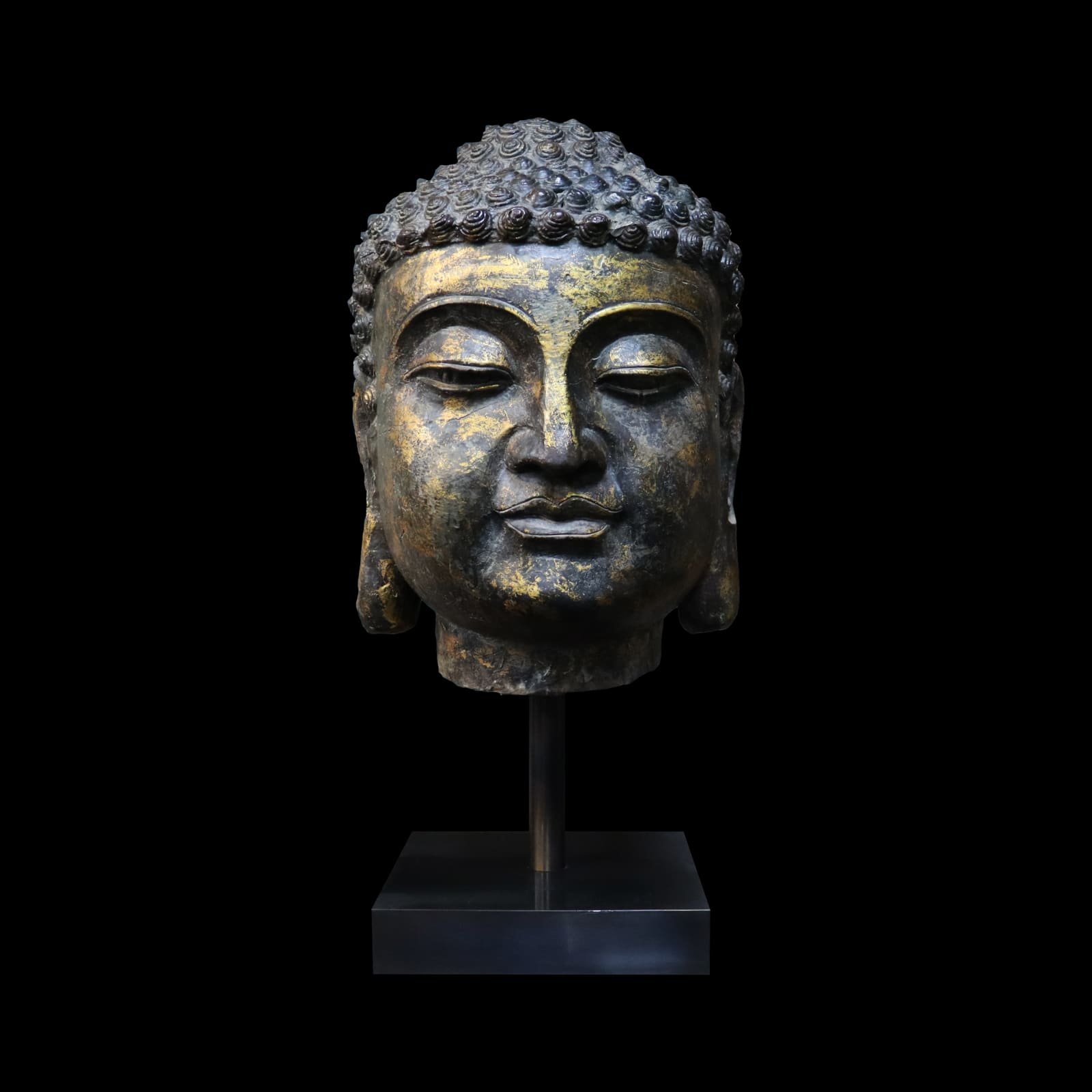Monumental Rattanakosin Style Buddha Head, 18th Century CE
Bronze, Gold
height 45.7 cm
height 18 in
Dimensions given exclusive of mounting
height 18 in
Dimensions given exclusive of mounting
AM.0431
Further images
After the destruction of Ayutthaya in 1767 CE by the Burmese, King Tak Sin the Great drove out the invaders and reunified the country, establishing a new capital at Thonburi,...
After the destruction of Ayutthaya in 1767 CE by the Burmese, King Tak Sin the Great drove out the invaders and reunified the country, establishing a new capital at Thonburi, a strategic river port town at the mouth of the Chao Phraya River. After Tak Sin was deposed, Thong Duang was chosen as king, known as Rama I, establishing the Chakri Dynasty which continues to reign over Thailand to this day. He moved the capital across the banks of the Chao Phraya River to its present location of Bangkok. The art of this period is known as the Rattanakosin style, although it is also referred to as the Bangkok style. Naturally, Rattanakosin art carried on many of the traditions of the Ayutthayan style, thereby establishing a link with the past.
This head bears all the fundamental traits of Buddhist iconography: downward looking eyes framed by sinuous black eyebrows, depict his serene state of being, further reinforced by his subtle smile. He also features a large rounded ushnisa, or bump, at the top of his gilt head that symbolizes his divine enlightenment. His long earlobes are the result of the heavy earrings he used to wear as a royal youth that pulled down on his ears, suggesting the luxurious life he abandoned. The general appearance associated with the Buddha characterizes him partly as a noble human being and ideal ruler and partly as superhuman. The elegance and spirituality of the Buddha is well conceived in this work.
This head bears all the fundamental traits of Buddhist iconography: downward looking eyes framed by sinuous black eyebrows, depict his serene state of being, further reinforced by his subtle smile. He also features a large rounded ushnisa, or bump, at the top of his gilt head that symbolizes his divine enlightenment. His long earlobes are the result of the heavy earrings he used to wear as a royal youth that pulled down on his ears, suggesting the luxurious life he abandoned. The general appearance associated with the Buddha characterizes him partly as a noble human being and ideal ruler and partly as superhuman. The elegance and spirituality of the Buddha is well conceived in this work.





